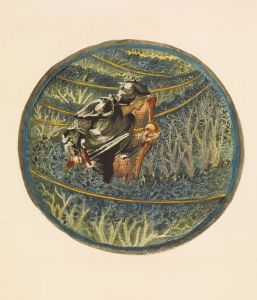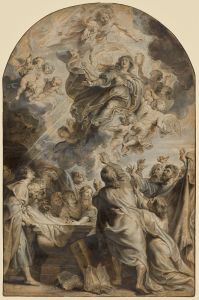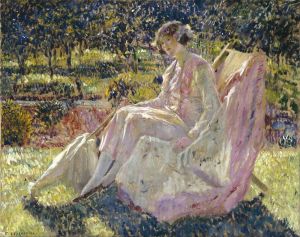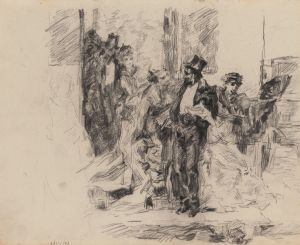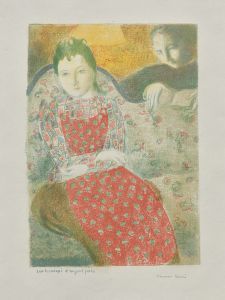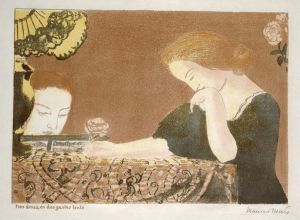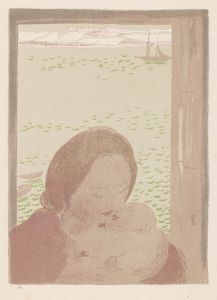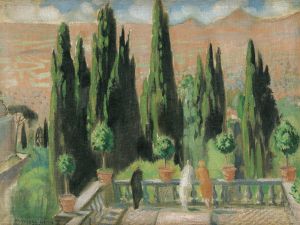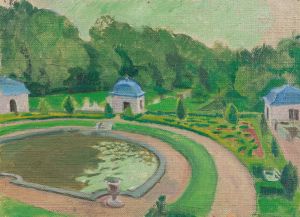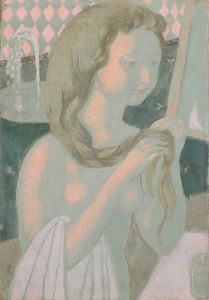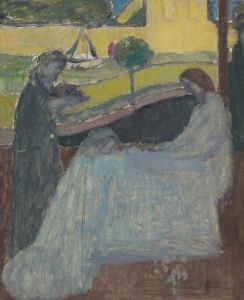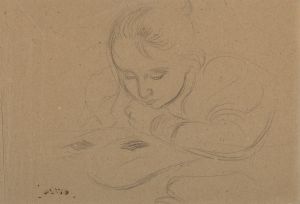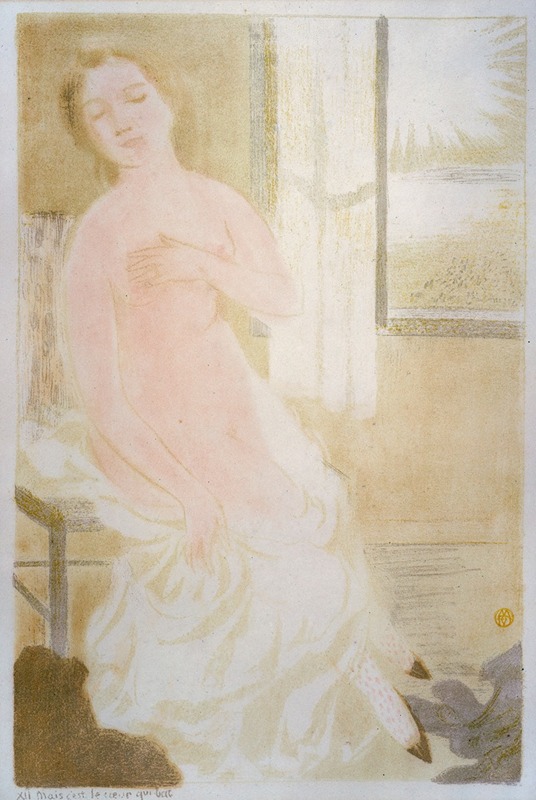
Mais c’est le coeur qui bat trop vite
A hand-painted replica of Maurice Denis’s masterpiece Mais c’est le coeur qui bat trop vite, meticulously crafted by professional artists to capture the true essence of the original. Each piece is created with museum-quality canvas and rare mineral pigments, carefully painted by experienced artists with delicate brushstrokes and rich, layered colors to perfectly recreate the texture of the original artwork. Unlike machine-printed reproductions, this hand-painted version brings the painting to life, infused with the artist’s emotions and skill in every stroke. Whether for personal collection or home decoration, it instantly elevates the artistic atmosphere of any space.
Maurice Denis, a prominent French painter and a leading figure in the Symbolist and Nabi movements, created the painting "Mais c’est le coeur qui bat trop vite" in 1892. The title translates to "But it is the heart that beats too fast," reflecting the emotional and introspective nature often found in Denis's work. This painting is a quintessential example of Denis's exploration of spirituality, emotion, and the synthesis of form and color, which were central themes in his artistic philosophy.
Denis was known for his belief that a painting, before being a depiction of a narrative or a representation of reality, is fundamentally a flat surface covered with colors assembled in a certain order. This perspective is evident in "Mais c’est le coeur qui bat trop vite," where Denis employs a harmonious blend of colors and simplified forms to evoke a sense of emotional depth and spiritual resonance. The painting is characterized by its use of muted tones and gentle, flowing lines, which create a serene yet poignant atmosphere.
The work is part of Denis's broader exploration of religious and mystical themes, a reflection of his deep Catholic faith. Throughout his career, Denis sought to express the divine and the transcendental through his art, often drawing upon biblical and liturgical subjects. In "Mais c’est le coeur qui bat trop vite," the emotional intensity suggested by the title is mirrored in the composition's subtle interplay of light and shadow, as well as the contemplative expressions of the figures depicted.
Denis was a founding member of the Nabi group, a collective of avant-garde artists who sought to transform the art world of the late 19th century by emphasizing the importance of symbolism and the spiritual over naturalistic representation. The Nabis were influenced by Paul Gauguin and the Symbolist movement, and they aimed to create art that conveyed deeper meanings and emotions rather than merely replicating the visible world. Denis's work, including this painting, reflects these ideals through its emphasis on mood, emotion, and the symbolic use of color and form.
"Mais c’est le coeur qui bat trop vite" is also notable for its reflection of Denis's interest in the intersection of art and literature. The title itself suggests a narrative or poetic dimension, inviting viewers to ponder the emotional and psychological states of the subjects within the painting. This interplay between visual art and literary expression was a hallmark of Denis's approach, as he often sought to create works that resonated on multiple levels of interpretation.
Throughout his career, Maurice Denis remained committed to the idea that art should be a reflection of the artist's inner world and spiritual beliefs. His work, including "Mais c’est le coeur qui bat trop vite," continues to be celebrated for its ability to convey profound emotional and spiritual truths through the language of color and form. Today, Denis is remembered as a pivotal figure in the transition from 19th-century Impressionism to the more abstract and symbolic art movements of the 20th century, with this painting standing as a testament to his enduring influence and vision.





